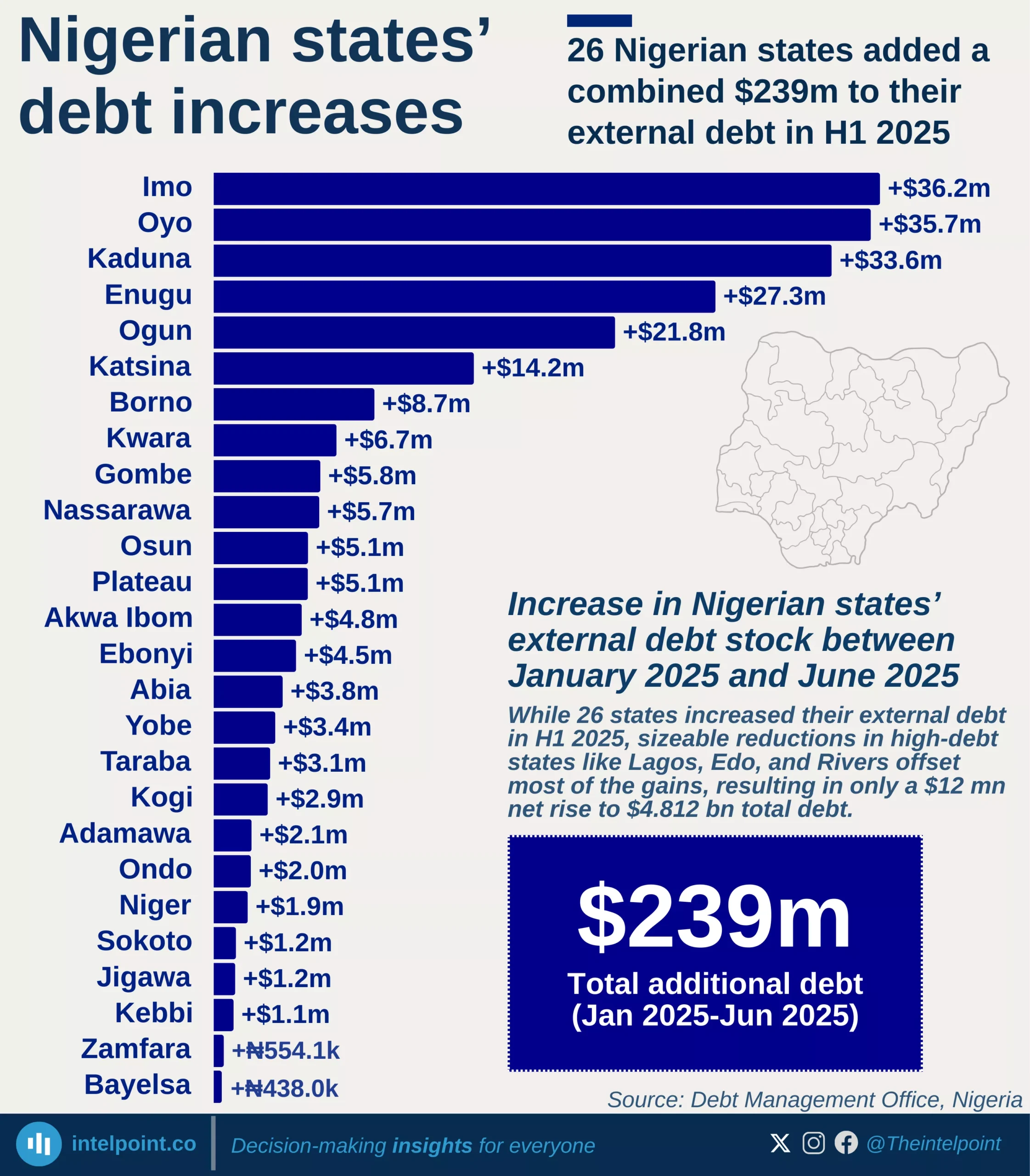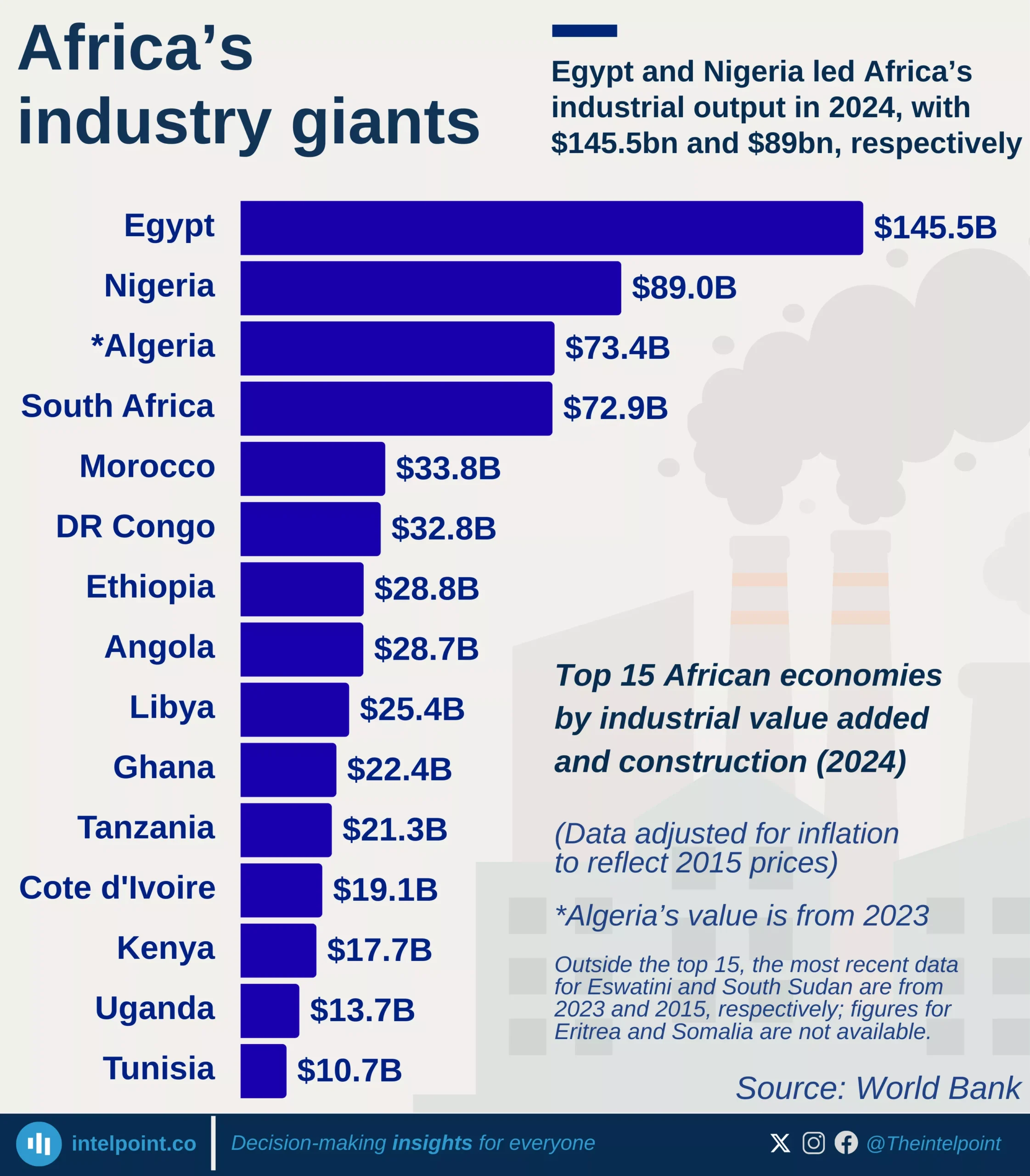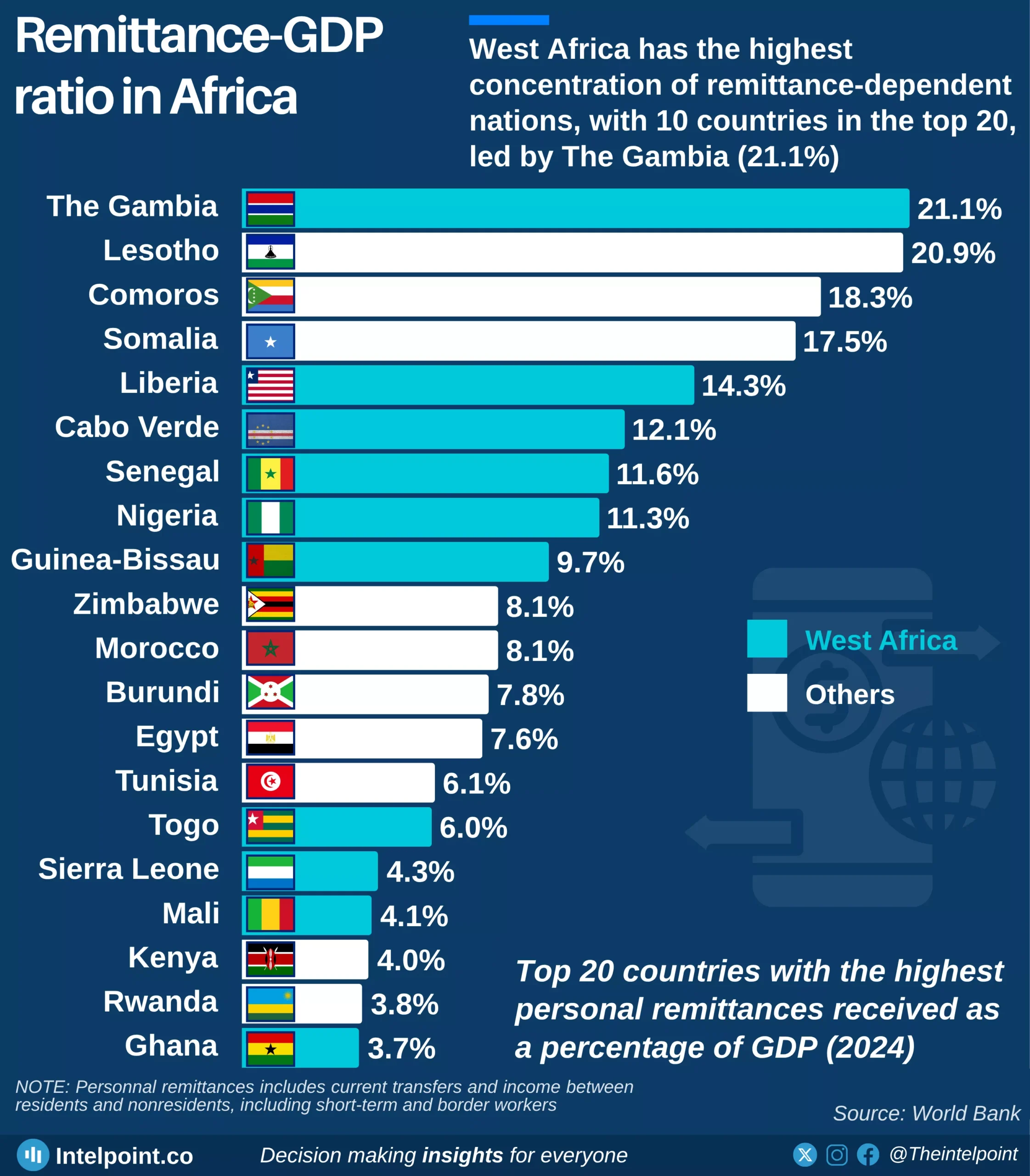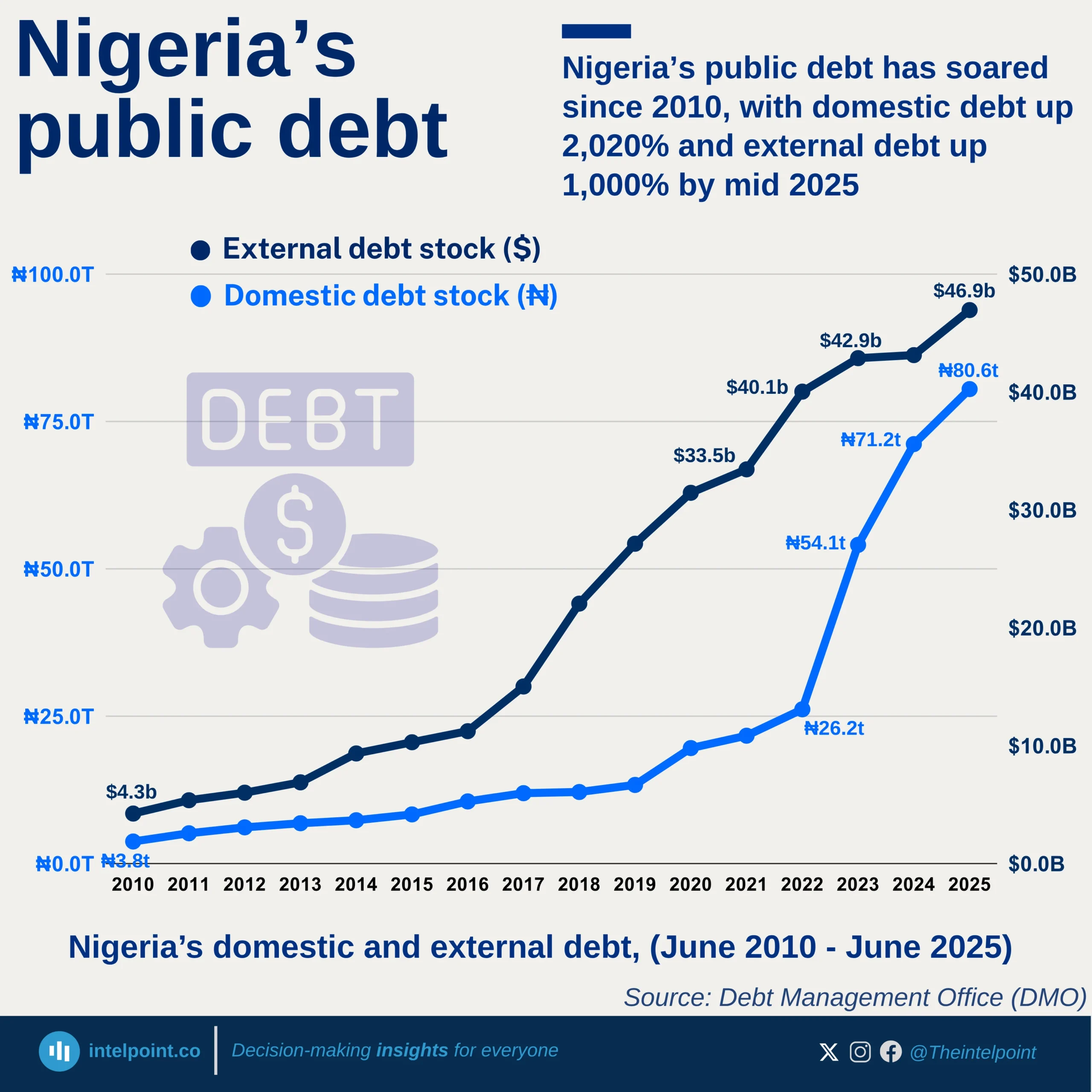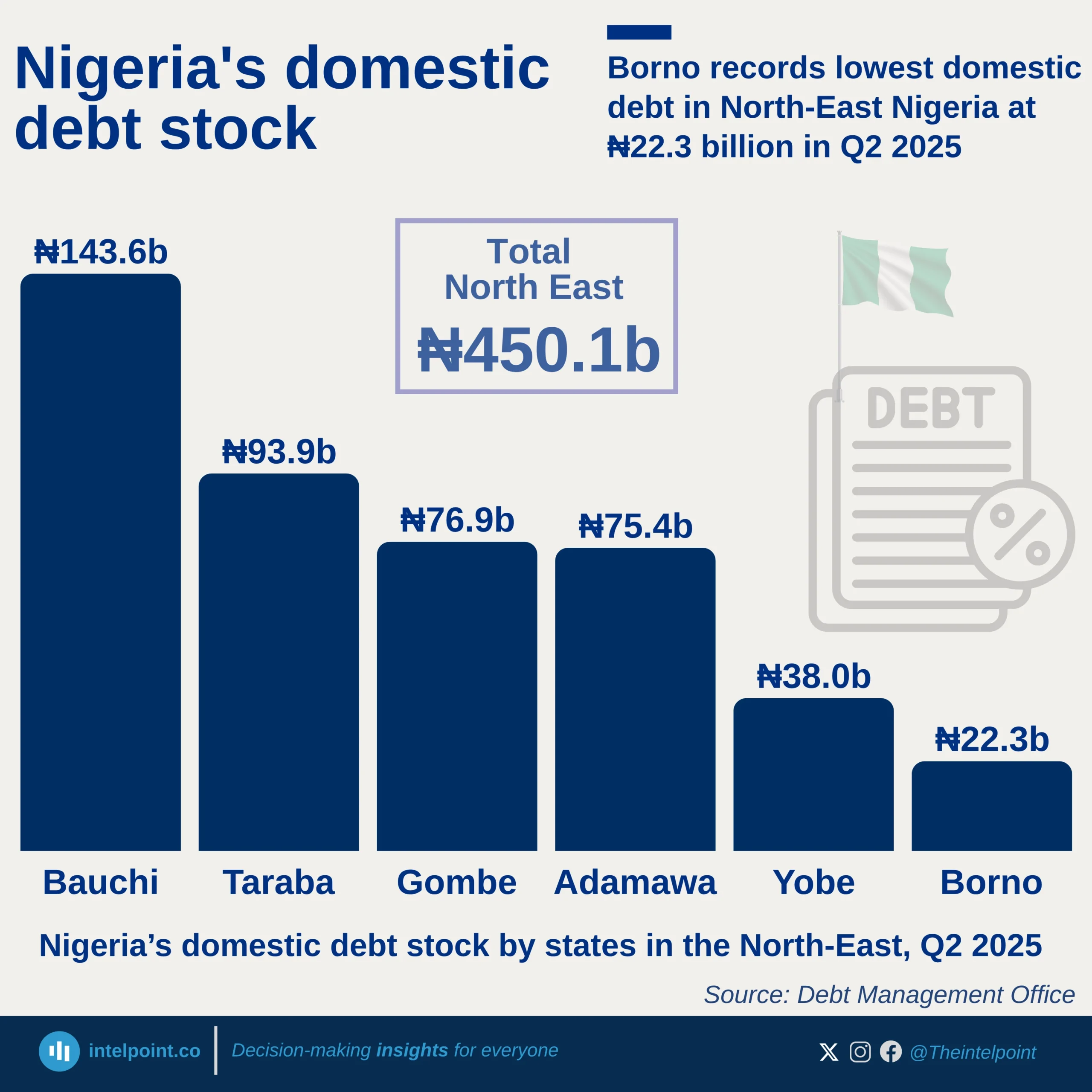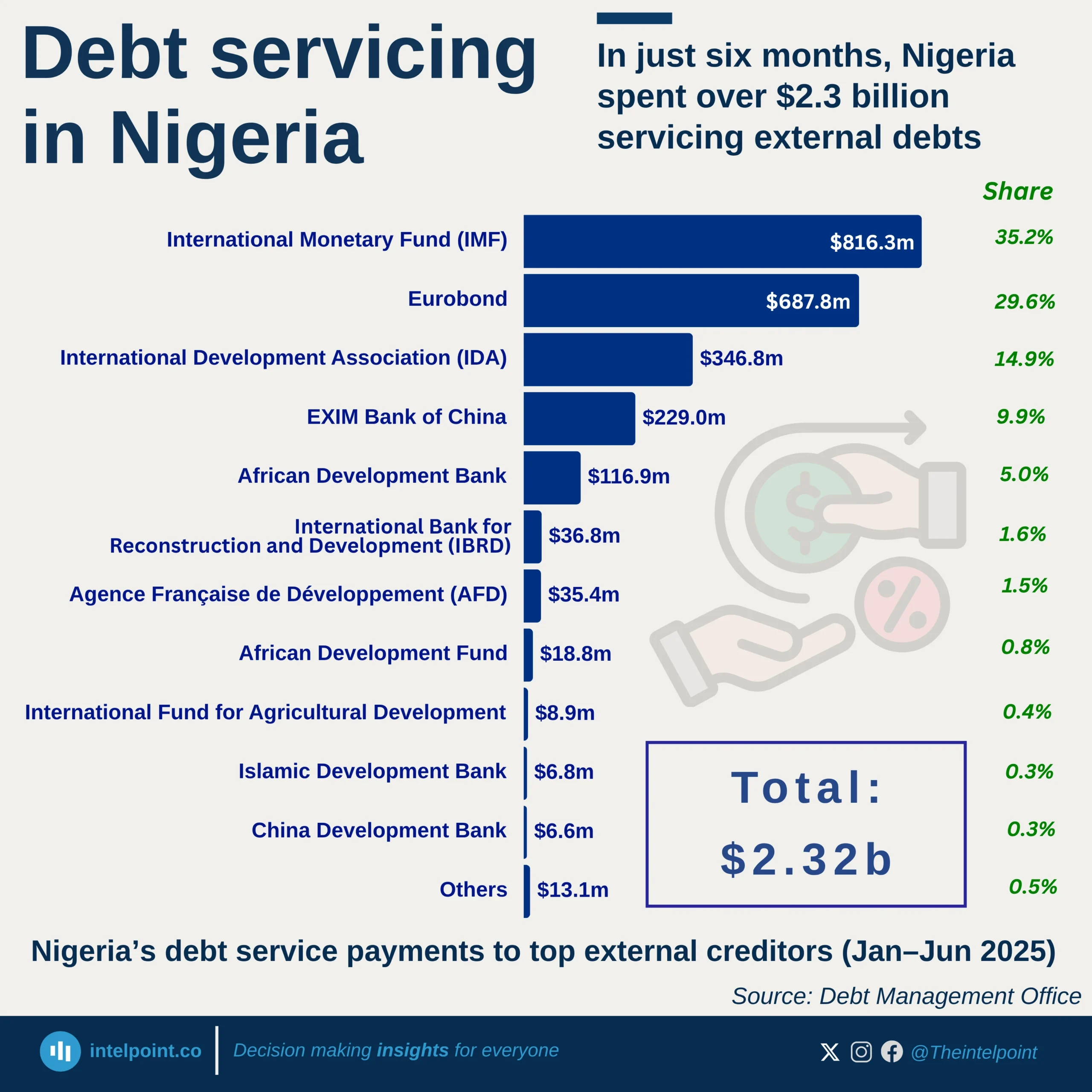Angola’s debt reached an all-time high of 68.3% of GDP in 2024. Even with a slight projected dip to 67.7% in 2025, the country remains in a position where more than two-thirds of its GDP goes into servicing debt, the highest ratio in Africa.
The chart also shows that Angola’s debt service ratio has not been a steady climb, but rather a series of sharp spikes and drops. After years of moderate levels (under 15%) from 2009 to 2014, the figure more than tripled between 2014 and 2016, hitting 41.9% in 2016. The years since then have been marked by volatility, with multiple jumps above 50%.
